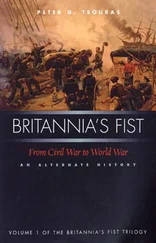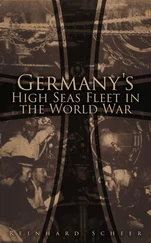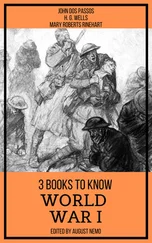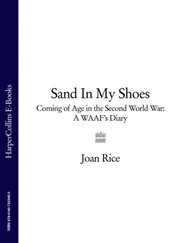50. NAA A5954 587/2 para 57.
51. Ibid., para 58.
52. Ibid., para 59.
53. NAA A5954 587/2 para 61.
54. Ibid., para 61.
55. Lieutenant General Sir Vernon Sturdee had been CGS from 30 August 1940 to 9 September 1942. Blamey then appointed him to Washington.
56. NAA A5954 587/2 para 62.
57. Ibid., para 63.
58. Horner, Crisis of Command , pp. 291–293.
59. For a map of the various Military Districts, see Long, To Benghazi , p. 28.
60. NAA A5954 807/1 folios 1080-1085.
61. Ibid., folios 1088–1089.
62. CP183/1 vol. 3.
63. NAA A5954 807/1 folios 1102–1103.
64. War Cabinet Minute 1577 NAA A5954 807/1 folio 1103.
65. Advisory War Council Minute 599, NAA A5954 813/2 folio 382; and War Cabinet Minute 1586 NAA A5954 807/1 folio 1116.
66. CP183/1 Volume 3 Cabinet Minute 684 NAA A5954 813/2 folio 425.
67. Advisory War Council Minute 684 NAA A5954 813/2 folio 425.
68. War Cabinet Minute 1719 NAA A5954 807/2 folio 1178.
69. CP183/1 Volume 3; there are five supplements to this agendum, all of which are subsequently referred to in the text; they are all filed with the original agendum.
70. NAA A5954 806/1 folios 829-830, War Cabinet Minute 1138.
71. NAA A5954 806/2 folio 938, War Cabinet Minute1322.
72. NAA A5954 806/2 folio 957.
73. NAA A5954 806/1 folio 870.
74. NAA A5954 806/2 folios 965-6.
75. There had been considerable political instability in the Parliament for the previous twelve months and more, partly because of the personality and approach of Menzies, and partly because there was nationwide uncertainty about what government policy should be. Menzies resigned on 29 August 1941, and was replaced by Fadden from the same side of the House. Less than six weeks later, Fadden found than he no longer had sufficient support to govern, and returned his commission to the Governor-General. The Governor-General immediately sent for the Labor leader, John Curtin, and he became Prime Minister on 7 October 1941. Curtin and four of his senior ministers, Forde, Makin, Evatt, and Beasley had all served on the Advisory War Council, and were thus familiar with the business of running a war. Curtin was a dedicated man and a good Prime Minister, but was perhaps fortunate in that the Japanese attack two months after his assumption of office brought the country solidly behind him. The events surrounding these changes is described clearly and in detail in Hasluck, The Government and the people 1939-1941 , pp. 491–523.
76. NAA A5954 807/1 folios 1057-8, War Cabinet Minute 1520.
77. NAA A5954 807/1 folio 1142.
78. ‘Future employment of AIF: General Sturdee’s paper of 15 February 1942’ is to be found in Wigmore, The Japanese Thrust , pp. 675–678.
79. Mackay’s appreciation was submitted to the Minister for the Army, Forde, on 4 February 1942. The text of this document is in Chapman, Iven G. Mackay, Citizen and Soldier , pp. 253–256.
80. In March 1943 a statement made by General MacArthur appeared in the press which started the Brisbane Line controversy. He said that when he arrived in Australia the intention of the Australian High Command was to give up the northern part of Australia, and defend a line just north of Brisbane. He immediately changed this attitude◦— he said◦— and made New Guinea the front line of defence. General Blamey was justifiably furious about this statement, and a correspondence raged, part of which can be found in NAA A5954 1300/1. It would appear that General MacArthur had either not read the appreciations of Sturdee and Mackay, or could not understand them.
81. NAA A5954 813/2 folio 495, Advisory War Council Minute 842.
82. Hopkins, Australian Armour , p. 325; see also AWM54 44/2/17.
83. Ibid., p. 98.
84. A major difficulty for armoured formations training with the British Army in the UK was the lack of any reasonably sized area in which to manoeuvre. The Australians had plenty of space, and made good use of it.
85. Quoted in Hopkins, Australian Armour , p. 105.
86. AWM54 44/2/17.
87. CP183/1 agendum 281/1942 and War Cabinet Minute 2224, NAA A5954 808/1 folio 1382.
88. Hopkins, Australian Armour , p. 326; and AWM54 44/2/17.
89. CP183/1 Volume 6 Agendum 186/1942.
90. NAA A5954 808/1 folio 1323.
91. Horner, Crisis of Command , pp. 299–300.
92. MP729/6 42/401/142 quoted in Horner, Ibid., pp. 302–304.
93. The principal sources used for this discussion of manpower in 1942 are: S.J. Butlin and C.B. Schedvin, War Economy 1942-1945 , Australian War Memorial, Canberra, 1977, pp. 13–47;Hasluck The Government & the People 1942-1945 , pp. 283–288; Wurth, Control of Manpower in Australia Feb 42 to Sep 44 , War Cabinet Agendum 197/1942, CP183/1 Volume 6; Control of Manpower in Australia was written in late 1944. Wurth had been Chairman of the Manpower Priorities Board, and was appointed Director-General of Manpower on 29 January 1942. This publication is the more significant because it was written by the person in charge, able to understand the external implications of the Directorate, and to understand its internal workings. Agendum 197/1942 is expanded by four supplements, and in total is a document of more than 130 pages. It is a comprehensive account of the manpower problems faced in 1942 and early 1943, and of the steps taken to provide solutions.
94. NAA A5954 807/1 folios 1102-3, War Cabinet Minute 1576.
95. Wurth, Control of manpower in Australia , p. 17.
96. Ibid., pp. 18–19.
97. NAA A5954 807/2 folio 1146, War Cabinet Minute 1646.
98. NAA A5954 807/2 folio 1167, War Cabinet Minute 1695.
99. Statutory Regulations 1942 No. 34.
100. War Cabinet Agendum 197/1942, CP183/1 Volume 6.
101. NAA A5954 808/1 folio 1335, War Cabinet Minute 2091.
102. Butlin and Schedvin, War Economy 1942-1945 , p. 22.
103. NAA A5954 808/1 folio 1359, War Cabinet Minute 2160.
104. NAA A5954 808/1 folio 1382, War Cabinet Minute 2223.
105. Butlin and Schedvin, War Economy 1942-1945 , p. 39.
106. Ibid., p. 44.
107. NAA A5954 808/2 folio 1417, War Cabinet Minute 2327.
108. NAA A5954 814/2 folios 662-3, Advisory War Council Minute 1090.
109. Wurth, Control of manpower in Australia , p, 31.
110. Handel, Dust, Sand and Jungle , p. 19.
111. Ibid., pp. 24–26.
112. Dickens, Never Late , pp. 219, 227, and map p. 224.
113. Handel, Dust, Sand and Jungle, pp. 26–28.
114. The actions of the 2/6th Armoured Regiment are described in several books and documents. The most detailed account is in Handel, The Vital Factor , pp. 125–208. Very interesting comments on the use of tanks from the infantry perspective can be found in the history of the 2/9th Infantry Battalion, Never Late by Gordon Dickens, pp. 191 et seq. See also McCarthy, South West Pacific, First Year, pp. 449–517.
115. Hopkins, Australian Armour , p. 112.
116. Ibid., pp. 115–116.
117. Handel, Dust, Sand and Jungle , pp. 69–70.
118. Hopkins, Australian Armour , pp. 117–118.
119. Ibid., p. 120.
1. Liddell Hart, A History of World War I (1914–1918) , p. 388.
2. Hopkins, Australian Armour , p. 63; Department of Defence, The Army War Effort , Canberra, 1944, p. 9.
3. For more details of these tanks, see Appendix 1.
4. Roberts, From the desert to the Baltic , p. 95, says of the Grants at Alam Halfa, where he commanded 22 Armoured Brigade: ‘The second important factor was the qualities and peculiarities of the Grant tank, which was the mainstay of the defence. The 75 mm gun was mounted in a sponson on the side of the tank. This prevented good, natural hull-down positions being selected, and since the gun had a very limited traverse only limited areas of fire were available for each tank. The tank was very high which increased the difficulty of concealment in anything but very broken ground. To make the best use of them we put them into the broken foothills, and where suitable positions could not be found these were achieved by bull-dozing.’
Читать дальше












